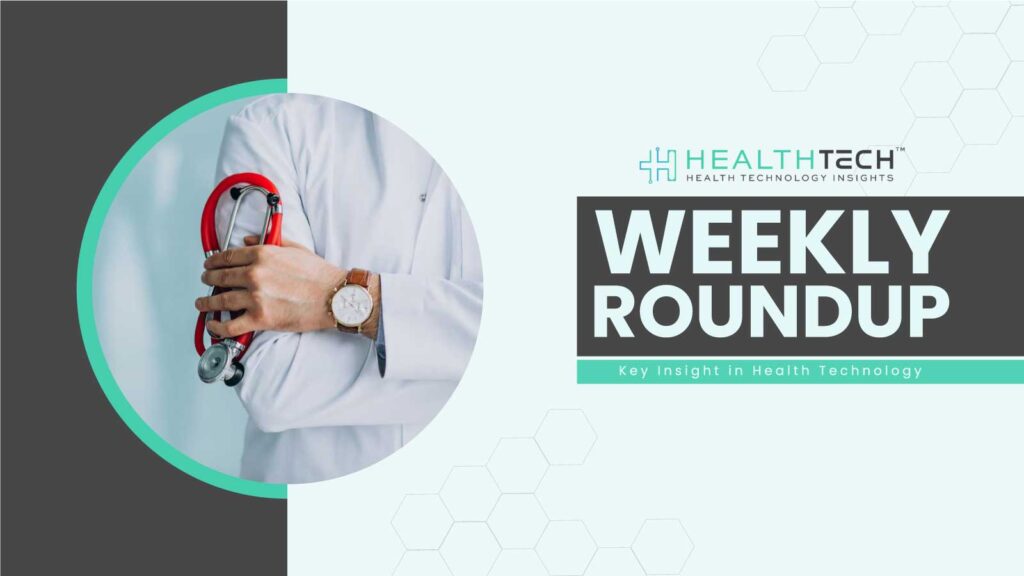Nokia announced today that it has launched a research initiative with Fraunhofer Heinrich Hertz Institute (HHI) and Charité – Universitätsmedizin Berlin to investigate the use of wireless sensing technologies in medical applications. The trio will focus on how sub-terahertz (sub-THz) frequencies could detect human vital signs from a distance, opening the door to a new generation of non-invasive medical monitoring and diagnostic solutions.
The unique characteristics of the sub-THz frequencies (90 GHz to 300 GHz) make them well-suited for wireless sensing applications. These applications would act similarly to radar, but with much higher accuracy due to sub-THz’s tiny wavelengths and high bandwidth. Nokia Bell Labs, Fraunhofer HHI and Charité are jointly exploring how sensing networks utilizing sub-THz frequencies could make extremely high-resolution spatial scans in hospital settings to keep track of patients’ vital signs.
HealthTech Insights: Everise Expands and Diversifies Its Healthcare Services Portfolio With the Acquisition of Continuum Global Solutions’ Vertical
In a hospital room for instance, the sensing network would be able to detect and distinguish the individual heartbeats and respiration rates of every patient in the room without the aid of intrusive sensors like electrocardiogram electrodes or fingertip pulse oximeters. Using beamforming technologies, the sensor network would theoretically follow individual patients, ensuring they were continuously monitored when using restroom facilities or moving about the hospital.
These sub-THz sensing networks could provide several benefits in healthcare. They would require no physical contact with human body, which would prevent false alarms from wearable monitors being accidentally removed. They would provide patients with much greater freedom of movement and allow hospitals to extend continuous heart and respiratory monitoring to a much larger proportion of their patient populations. The technology could also lead to new in-home healthcare applications. For instance, smart home systems could track patients’ vital signs, alerting physicians to any changes.
HealthTech Insights: EquipX Announces Collaboration with Vizient to Optimize Healthcare Equipment Fleet
The collaboration brings together three of the leading organizations in technology and medical research. A groundbreaking innovator in the fields of communications and multimedia, Fraunhofer HHI will lend its expertise in sensor technologies. As Europe’s largest academic research hospital, Charité will validate and evaluate the sensing technology. Nokia Bell Labs, one of the world’s premier applied-research institutions, will bring its radio-design and sensing competencies to the table.
Nokia Bell Labs is investigating many ways for using wireless spectrum to create new sensing technologies. For instance, a key component of future 6G networks is joint communications and sensing (JCAS), which will allow networks to sense their surroundings. By working with Fraunhofer HHI and Charité on healthcare sensing solutions, Nokia is demonstrating its technology leadership beyond the communications business.
HealthTech Insights: Carestream Secures Crucial Business Partner Agreement in Algeria
Peter Vetter, President of Bell Labs Core Research, Nokia, said: “It’s a good day when we can find new applications for our research beyond the communications industry. Wireless sensing is a fundamental component of our long-term 6G vision, but if we can apply these same concepts to creating better healthcare solutions, then we’ve produced even more benefit for society.”
Professor Sascha Treskatsch, Head of the Department of Anesthesiology and Intensive Care Medicine at Campus Benjamin Franklin, Charité – Universitätsmedizin Berlin, said: “We need to have more-flexible and less-invasive monitoring solutions, which can easily be integrated in daily life and incorporated into hospitals’ information systems.”
HealthTech Insights: Forian Partners With Databricks to Expand Access to Advanced Healthcare Analytics
Professor Slawomir Stanczak, Head of the Wireless Communications and Networks Department at Fraunhofer HHI and Head of the Network information Theory Group at Technische Universität Berlin, said: “Sub-THz technology has enormous potential to revolutionize medicine. With its high bandwidths for communication and sensing, it enables real-time monitoring of bodily functions and more precise tracking of treatment progress. This technology can fundamentally change the way we detect disease and treat patients.”
To participate in our interviews, please write to our HealthTech Media Room at news@intentamplify.com
Source – globenewswire




